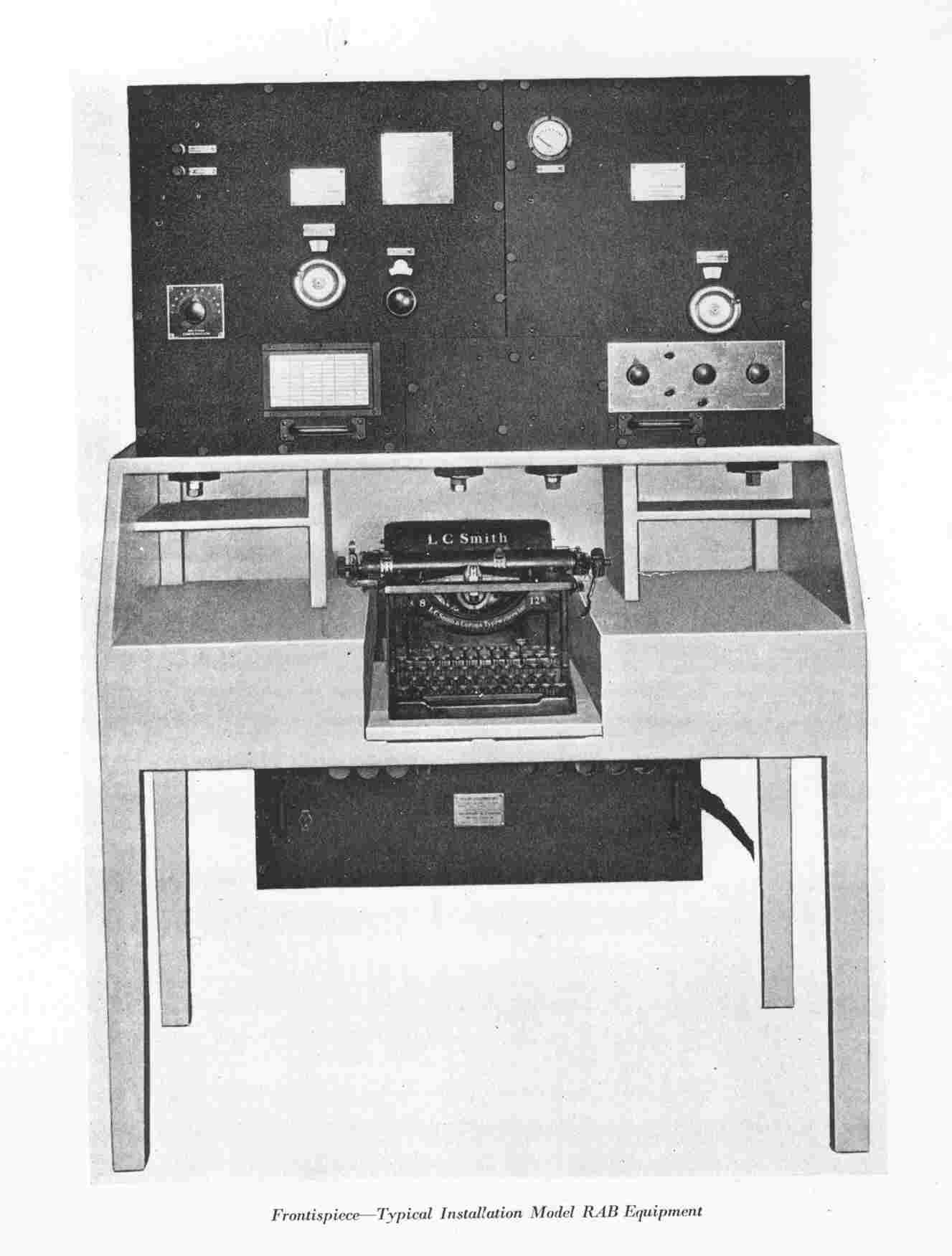
|
Model RAB Radio Receiving Equipment
- Range 1,000 - 30,000 KC in eight band-switched ranges
- 2 Tuned RF stages for effective image rejection
- 2 IF stages with 8 tuned circuits for a modicum of
selectivity.
- IF frequencies: 600, 1450, 3250, 7200 KC The
higher IF's ease the image problem at higher frequencies, and widen the
bandwidth to compensate for transmitter instability.
- IF frequency depends on band in use
- Remote-cutoff tubes in RF and IF for excellent manual gain
control
- Regulated PS for LO and BFO
- Audio filtering for AM and CW
- Audio limiter (AVC)
- Weight: 455 lb (plus table and typewriter)
|


